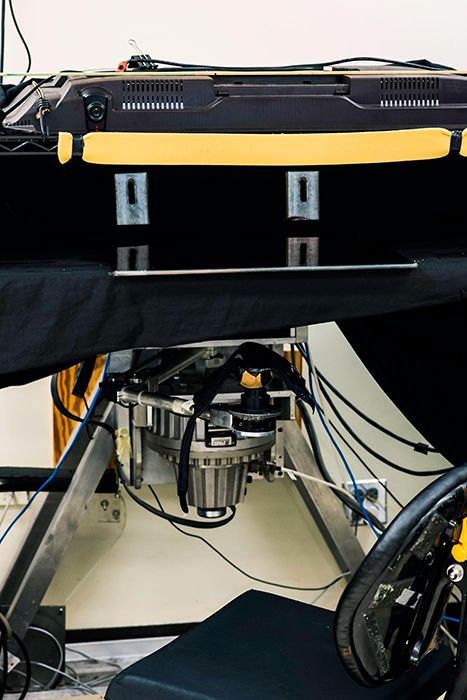This “Psychic Robot” Can Read Your Mind
Researchers have created an algorithm that understands what movement you meant to make, even if you’re interrupted
/https://tf-cmsv2-smithsonianmag-media.s3.amazonaws.com/filer/c3/64/c3649d51-5287-49bf-8de8-e4d8371adacb/airplane_cockpit.jpg)
Researchers at the University of Illinois at Chicago have created a “psychic robot.” The robot is based on an algorithm that can understand the intention behind a movement—you intended to turn the steering wheel, you intended to take a step, you intended to push the red button—even when that movement is interrupted.
While this may sound like the next step in cyborg world domination, it has actually been developed primarily to help brain injured patients move better.
This kind of prediction is possible, explains Justin Horowitz, a graduate research assistant in bioengineering, because the human nervous system works so slowly.
“Humans have to plan ahead, because there’s so much delay between eye and brain and hand,” he says.
So when a movement is interrupted, it takes at least a tenth of a second for a human brain to realize it.
The psychic robot takes advantage of this delay to “correct” the movement. So if you intend to drive straight down a road but accidentally jerk the steering wheel to the left, the robot could understand and correct the swerve.
Horowitz developed the algorithm by studying participants as they held on to a robot arm. The participants would attempt to reach for a target, but the robot arm would knock them off course. The robot arm would measure the participants’ motions as they attempted to correct the movement.
Horowitz and the rest of the team used the data from the trials to create an algorithm to predict the subjects’ intents. This algorithm incorporates a number of complex factors, such as arm length and joint stiffness. From this, the team created the “psychic” software. While a person needs a fraction of a second to correct a movement, a machine can correct much faster. The software based on the algorithm knows how to put your hand back on the right course before you even realize you’ve been bumped.
The findings, a culmination of five years of work, were recently published in the journal PLoS ONE. Horowitz was the first author on the study, while professor of bioengineering James Patton was the principal investigator.

Patton says the psychic robot concept could be put to a variety of uses beyond medical therapy. It could be useful for pilots trying to fly in turbulence, for example – even if the pilot’s hands shook as he or she tried to turn the yoke, the robot would “know” what he or she really meant to do. It could be a training tool for musicians or athletes. It could aid surgeons. All these uses would require different mechanical interfaces, something the team is actively studying.
“All of these things involve human-machine interactions and can be enhanced by what we’re trying to do,” he says.
A person who has suffered a stroke or a traumatic brain injury might be able to use a “smart” prosthesis based on the algorithm. When the wearer attempts to take a step or reach for a cup, but is interrupted by muscle spasms or tremors, the prosthesis could correct the action, leading to smoother movement. In the case of planes and cars, the interface might be a series of sensors built into the dashboard.
“[Humans are] slow, and because of that we have to have something that predicts the future,” Patton says. “That’s the fascinating part to me.”
/https://tf-cmsv2-smithsonianmag-media.s3.amazonaws.com/accounts/headshot/matchar.png)
/https://tf-cmsv2-smithsonianmag-media.s3.amazonaws.com/accounts/headshot/matchar.png)